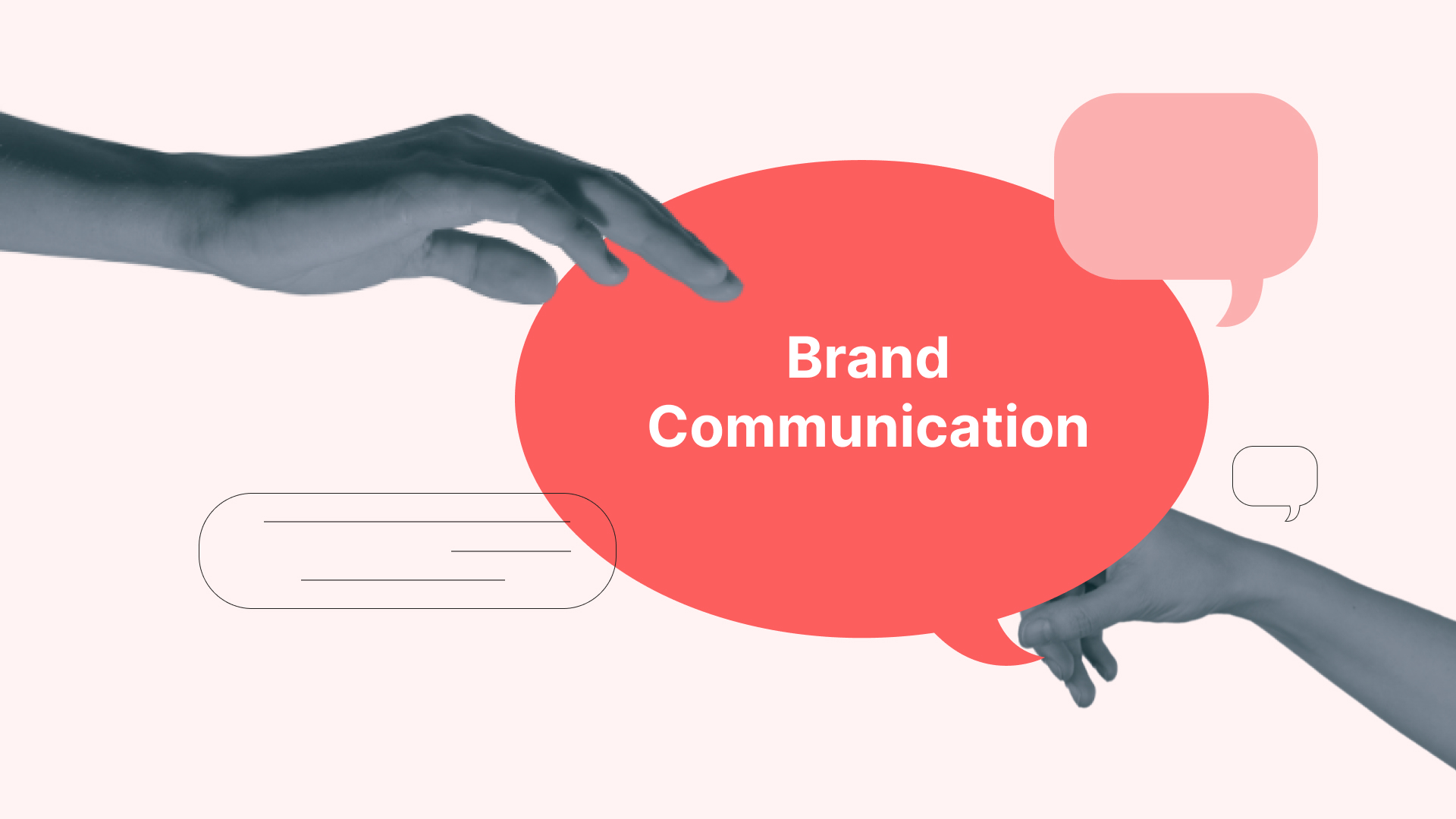Corporate Branding That Resonates: A 2025 Guide for B2B Companies
Discover effective corporate branding strategies that build trust and loyalty. Learn how to enhance your brand’s impact. Get expert tips today.

Discover effective corporate branding strategies that build trust and loyalty. Learn how to enhance your brand’s impact. Get expert tips today.


Let’s be honest, you’re not starting your day thinking, “How’s my brand story doing?”
You’re focused on hitting targets, growing the pipeline, and achieving measurable results.
But here’s the thing: if your message doesn’t speak to what your clients care about, no amount of ad spend will make it stick.
And it shows that over half of consumers (51%) feel brand marketing doesn’t reflect their needs or values.
Many businesses are prioritising performance marketing, with the 2025 Gartner CMO Spend Survey showing that 54% of CMOs focus on short-term results, while only 22% focus on brand marketing. This trend can leave brands struggling to form a lasting connection that truly resonates with their audience.
In this guide, we will examine why corporate branding matters for your business, outline steps to create a strategy that matches your goals, and show how to build a brand that earns trust, strengthens client relationships, and supports sustained growth over time.
Before we go deeper, here’s a quick glance at the key points:
A strong corporate brand doesn’t compete with your performance metrics. It amplifies them. It sets the tone for every conversation, every pitch, and every decision that shapes client trust.
Corporate branding is how your company is perceived across every touchpoint, from customer interactions to marketing materials. It’s more than just visuals—it’s the message you communicate and the trust you build. Every decision you make influences how others view your business.
In B2B, where partnerships run deep and decisions carry weight, your brand signals reliability and long-term value.
It tells clients: we’re not just a vendor — we’re a partner who understands your business.
Corporate branding is essential for building trust, creating loyalty, and ensuring long-term success. It drives internal cohesion and external recognition. Without it, your company risks being overlooked in a competitive market.
Here’s why it should be a top priority:
Your brand isn’t a marketing expense. It’s a growth asset.
Every brand that lasts shares one thing: Clarity.
Clarity in visuals, voice, and values.
Building a strong brand involves more than just a logo or catchy tagline. It’s about creating a clear identity that resonates with your audience and stays consistent across all touchpoints. Every element must reflect your values, mission, and vision to create a cohesive brand experience.
Here are the key elements that make up a solid corporate brand:
When these align, your brand stops being “what you say” and becomes “how you’re known.”
You don’t build a great brand by shouting louder. You build it by listening better.
Building a successful brand requires careful planning and consistency. A strong brand engages customers, builds trust, and remains relevant over time.
Here’s where to start:
Use social media, SEO, and content marketing to boost your online presence. Consistent, value-driven content will connect with your audience and grow brand recognition.
For example, ThoughtFull used digital channels to promote mental health awareness, increasing engagement across its platforms in Singapore, Malaysia, Hong Kong, and the Philippines.
Ensure every interaction with your customers reflects your brand’s values. Invest in customer service training and gather feedback to improve the customer journey.
For example, Allium Healthcare created a brand strategy that emphasised personalised care, resulting in stronger patient relationships and an exceptional customer experience that reflected their core values.
Stay updated on trends and adjust your branding strategies accordingly. This helps maintain relevance and appeal to modern customers.
For example, the Singapore Symphony Orchestra revamped its brand to engage a broader audience, revitalising its relevance and increasing attendance amid changing cultural preferences.
Keep your brand’s message consistent across all channels. Clear guidelines ensure that your communications align with your brand’s core values.
For example, CrimsonLogic unified its brand messaging across 19 countries, focusing on “Simpler trade. Smarter tech.” This consistency across all international touchpoints reinforced its trusted reputation in global trade.
Partnering with experts can help refine your branding strategy. They offer valuable insights and ensure your brand message stays strong and consistent.
For example, Vantage worked closely with G.K. Goh Holdings to refresh their identity, using art from the William Farquhar Collection to convey a modern, humanised brand that reflects both legacy and contemporary values.
A solid strategy is essential, but it’s equally important to measure how well your branding efforts are performing.
Strong brands don’t just adapt; they lead the change.
A brand that can’t measure itself can’t improve itself.
Forget vanity metrics, focus on insights that drive better decisions.
Only 21% of brand leaders feel the metrics they track lead to meaningful actions. To make your brand stronger, you need to measure the right things and be willing to adapt based on the findings.
Here's how you can use those insights to improve your brand.
How well is your target audience familiar with your brand? Measuring brand awareness is crucial for understanding if your brand is even part of the consumer’s consideration set. Without awareness, your brand won't make the shortlist.
Here are the key methods to measure brand awareness:
Does your brand provide something unique to your target market? Relevance is a core component of brand equity, helping you build a loyal customer base. When your brand is relevant, it becomes the preferred choice in your category.
To assess your brand's relevance, focus on these methods:
How strong is your brand’s presence in the market after several customer interactions? Brand power reflects how your brand is perceived in comparison to competitors and can indicate future consumer demand.
Here’s how you can measure your brand’s power:
Track awareness, relevance, and brand power to see where your story lands — and where it falls flat.
Because a brand that listens, learns, and adjusts always stays ahead of the curve.
Building a strong corporate brand isn’t just a one-time effort; it’s a constant process of ensuring consistency, staying relevant, and adapting to market shifts. But even the most established brands face hurdles that can undermine their identity, customer trust, and long-term success. Some of these are the challenges that can weaken your brand’s position:
A brand’s message must be clear and consistent at every touchpoint. When it’s not, confusion arises. Tropicana’s 2009 packaging redesign serves as a classic case. The company replaced its recognisable orange-with-a-straw image with a more generic design, causing a 20% sales drop.
Consumers couldn’t connect with the new look, and the brand suffered as a result. Consistency in messaging is vital; without it, your brand loses its identity and trust.
Brands that don't adapt to changing consumer preferences or market conditions risk falling behind. Blockbuster’s refusal to move into digital streaming is one of the most glaring examples. While Netflix capitalised on the streaming boom, Blockbuster clung to its physical rental model.
The result was inevitable: irrelevance and, eventually, bankruptcy. To stay competitive, brands must constantly evolve in line with customer needs and emerging trends.
The internal understanding of a brand must align with how it’s perceived externally. JCPenney’s struggles in the early 2010s show how internal confusion can ripple outwards. Frequent logo changes, unclear messaging, and a lack of cohesive strategy left both employees and customers puzzled.
When employees don't fully embody the brand’s values, it’s nearly impossible for the brand to consistently connect with customers. A strong brand starts from within.
A brand that blends in with the competition won’t make a lasting impact. Forever 21’s reliance on fleeting fashion trends without creating a distinctive identity caused its eventual downfall.
Without a unique position, the brand failed to build a loyal customer base, and it became just another fast-fashion retailer. Brands need to stand for something beyond the product; something that customers can connect with emotionally.
Brand health isn’t something you can set and forget. Monitoring customer sentiment and market shifts is crucial for staying relevant. Jaguar’s 2024 rebranding campaign, which aimed to appeal to a younger audience, failed due to a lack of consumer insight.
The brand’s attempt to reinvent itself alienated its loyal customer base and created confusion. Ongoing brand monitoring allows you to adjust your strategy and stay connected with your audience.
The challenges in corporate branding require continuous attention, adaptation, and a deep understanding of your customers. Remember, by addressing these issues head-on, brands can maintain relevance, strengthen trust, and continue to grow over time.
Corporate branding is more than a logo or tagline; it’s the foundation of your company’s relationship with customers, employees, and partners. It requires careful thought, consistency, and the ability to adapt to market changes. When done right, a strong brand builds trust, loyalty, and long-term success. The challenges are real, but so are the opportunities for growth and differentiation.
At Vantage Branding, we specialise in helping businesses like yours create strong, lasting brands. Explore our case studies to see how we've helped brands overcome challenges and stand out. Speak with our team to see how we can support your brand’s journey to success.
1. What are the 5 C's of branding?
The 5 C's of branding are Company, Customers, Competitors, Collaborators, and Context. Each element helps a brand understand its internal strengths, customer needs, market positioning, relationships with business partners, and external factors like market trends.
2. What are the 4 Ps of branding?
The 4 P's of branding refer to Product, Price, Place, and Promotion. These elements are critical for defining how a brand presents itself to the market and how it aligns with customer expectations.
3. What are the three main purposes of branding?
The main purposes of branding are to create recognition, build trust, and communicate a brand’s values and personality. A strong brand helps customers quickly identify your product or service and forms lasting relationships with them.
4. What are the disadvantages of branding?
Branding can be costly, particularly in the early stages. It may also limit flexibility, as a well-established brand can become hard to change. Additionally, poor branding efforts can lead to confusion and misalignment with customer expectations.
5. What is the ROI of branding?
The ROI of branding is typically measured by increased brand recognition, customer loyalty, and sales growth. Strong branding leads to higher customer retention, stronger word-of-mouth recommendations, and the ability to charge premium prices for products or services.


.jpg)